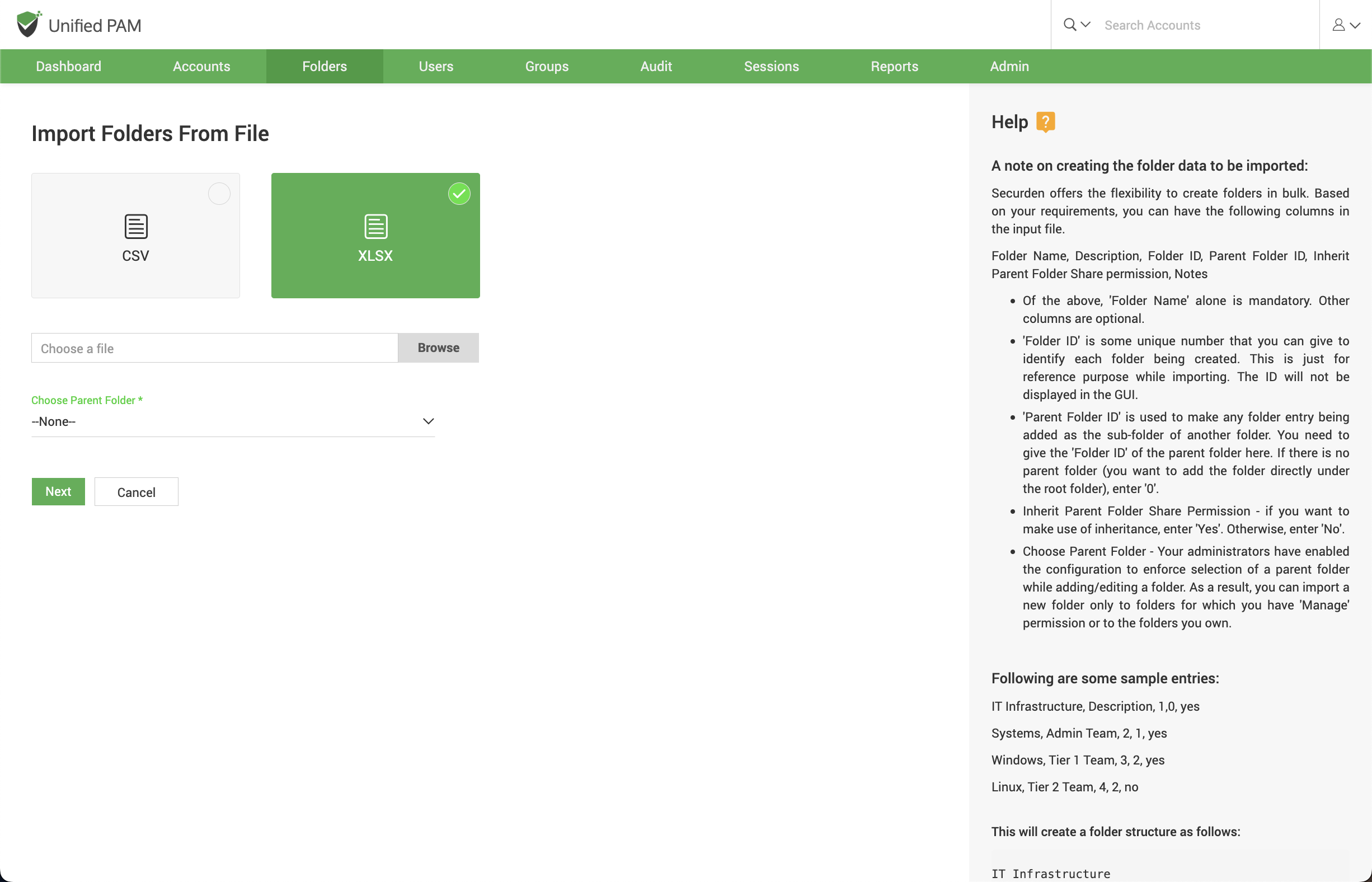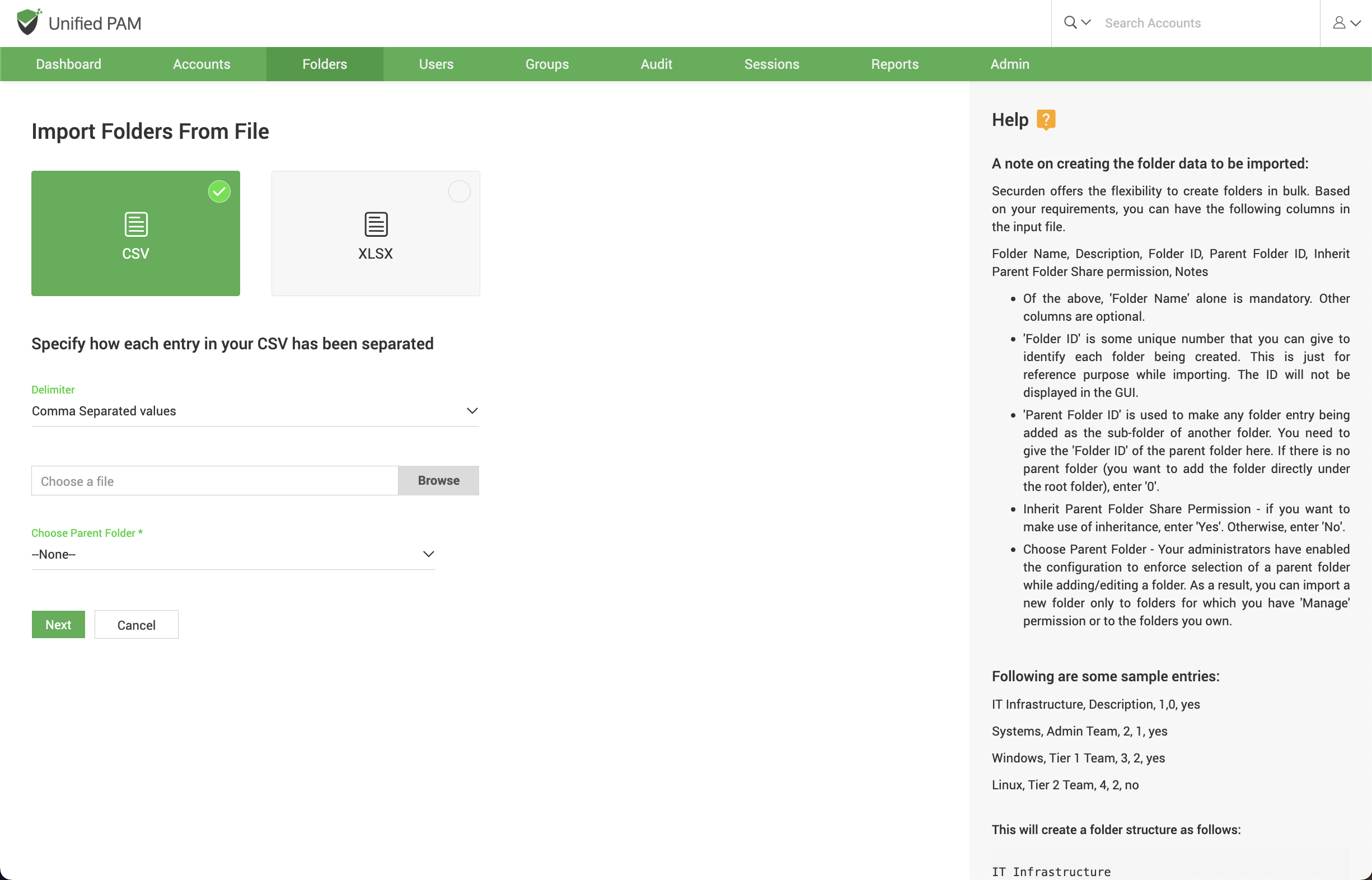Import Folders from Files¶
In situations where multiple folders are to be added, you have the option to import them from a file.
Navigate to Folders >> More >> Import Folders from Files.
You can either import folders from a CSV file or an Excel sheet.
- For CSV files, you need to specify how the values have been separated.
You can choose between comma-separated values and tab-separated
values. This is not required in the case of Excel Sheet (XLSX) files.

- Choose the file from your computer by clicking on Browse.
- If the imported folder is not a subfolder of a parent folder, leave the Parent Folder as --None--. If the folder is a subfolder, select the parent folder from the drop-down.
Note
If your administrators have enabled the configuration to enforce the selection of a parent folder while adding/editing a folder, you will only be able to import folders only as subfolders to folders for which you have Manage permission or to the folders you own.
A note on creating the folder data to be imported:
Based on your requirements, you can have the following columns in the input file.
Folder Name, Description, Folder ID, Parent Folder ID, Inherit Parent Folder Share permission, Notes
-
Of the above, Folder Name is mandatory. Other columns are optional.
-
Folder ID is an unique number that you can give to identify each folder being imported. This is just for reference purposes while importing. The ID will not be displayed in the GUI.
- Parent Folder ID is used to make any folder entry being added as the sub-folder of another folder. You need to give the Folder ID of the parent folder here. If there is no parent folder (you want to add the folder directly under the root folder), enter 0.
- Inherit Parent Folder Share Permission - if you want to make use of inheritance, enter Yes. Otherwise, enter No.
Following are some sample entries:
IT Infrastructure, Description, 1,0, yes
Systems, Admin Team, 2, 1, yes
Windows, Tier 1 Team, 3, 2, yes
Linux, Tier 2 Team, 4, 2, no
This will create a folder structure as below:
IT Infrastructure
|
|__Systems
|
|__Windows
|
|__Linux


